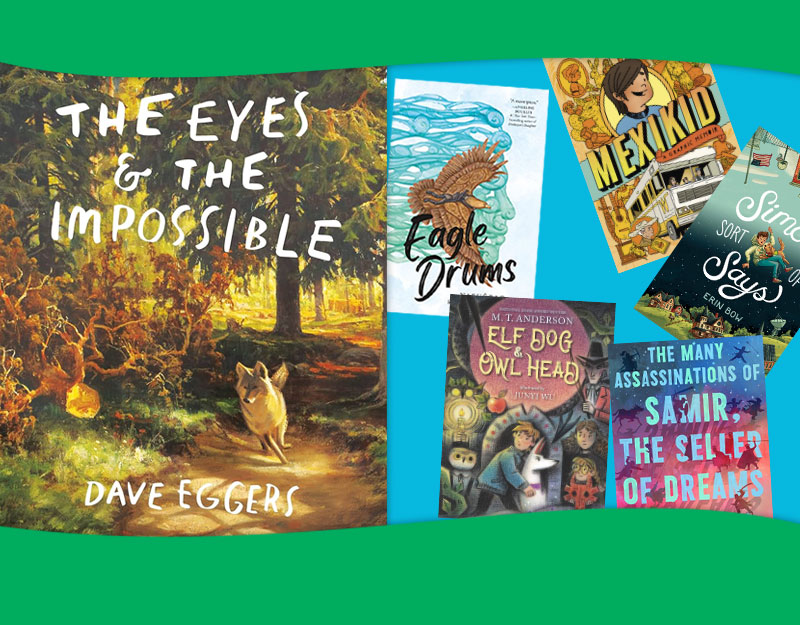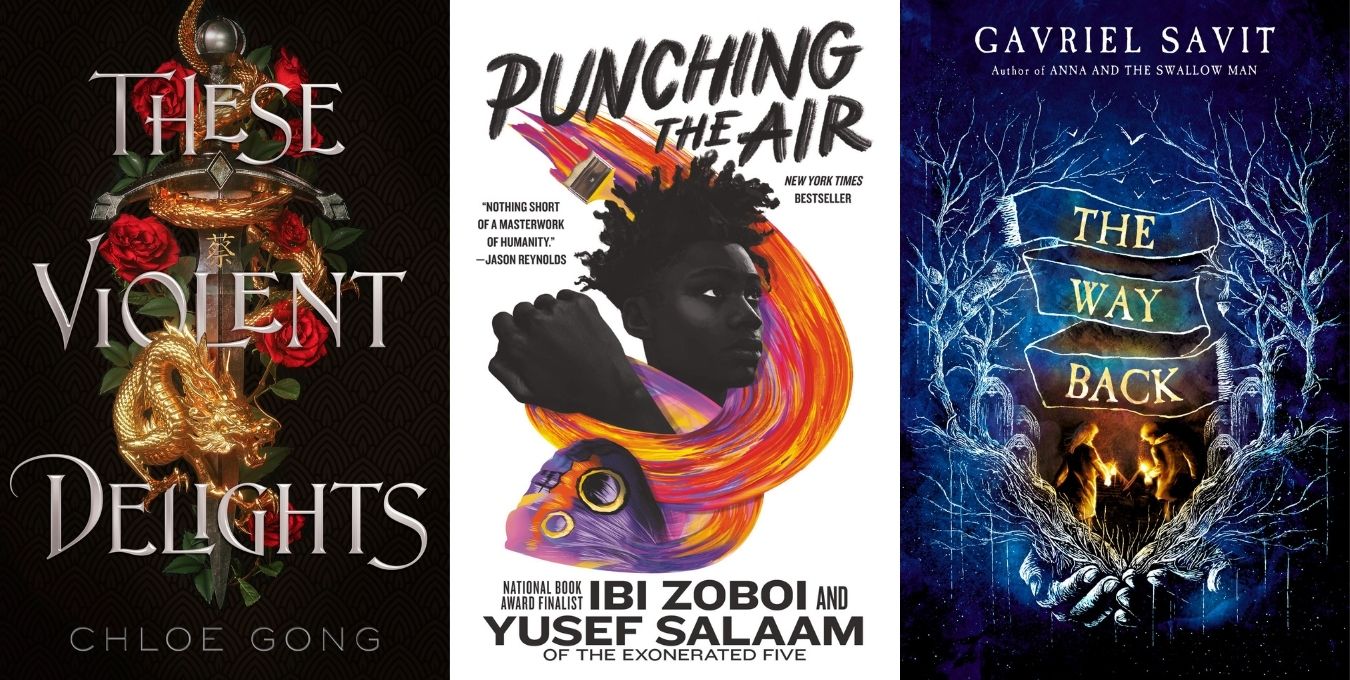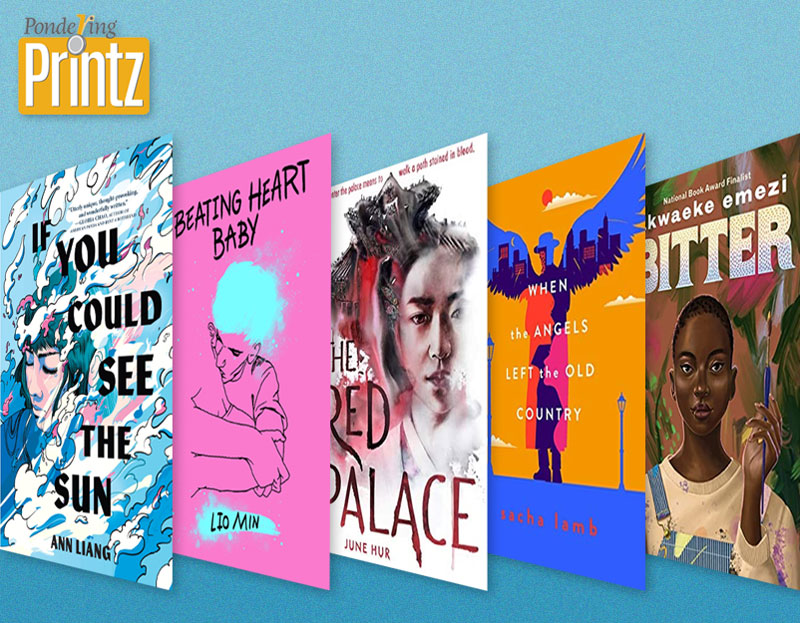Review of the Day: Wabi Sabi by Mark Reibstein
Credit author Mark Reibstein with this much. He sure doesn’t shy away from trying to teach kids complex philosophical concepts. Here he is writing his very first picture book and does he select something easy like being the new kid in school or losing your first tooth? No, Reibstein decides to write a book about the ancient Chinese concept of wabi sabi (later adopted by the Japanese), working in thoughts on Taoism, haiku, and even the works of Basho on the sly. Paired alongside the remarkable Ed Young’s artwork, the final product is a quiet, deep, moving story that may require a special audience, and yet has many uses.
One day Wabi Sabi the cat overhears his mistress discussing his name with a pair of visitors. When asked what “wabi sabi” means, the young woman replies, “That’s hard to explain.” Curious, Wabi Sabi sets out to find the true meaning of her name. Each creature she asks explains how difficult a concept it is to explain, and they often end their thoughts with a little haiku (each one describing wabi sabi in some manner). It isn’t until the cat meets a wise monkey and partakes of tea in a plain and beautiful bowl that the phrase begins to take on a real meaning. Wabi sabi is the feeling you get when you find harmony in the imperfect that is beautiful. Stopping at a temple on her way home, Wabi Sabi creates poems in its honor and truly understands her name by the time she meets up with her mistress once again.
ADVERTISEMENT
ADVERTISEMENT
The book bears some surface similarities to Jon Muth’s Zen Shorts, though the tone feels a bit different. In both cases, however, you find yourself wondering idly about audience. The idea of a cat searching for the true meaning of its name is something kids will grasp easily. But with the added haiku in the text, the book appears to be aimed at older children. Maybe if a school had a class assignment on haiku this would make for a natural companion piece. Normally when a child has to learn about haiku they are handed a book of poems that are separate from one another. A title like If Not for the Cat by Jack Prelutsky is fun for kids but doesn’t always make plain haiku’s power to set a moment in time apart from the busyness of life. What Wabi Sabi does is to place these haikus within the context of a larger tale. When that happens, the little sayings and moments are set apart. They are shots of quietude in the midst of a busy narrative. As a result, the entire book has a kind of calming effect on the reader. Whether that effect will touch children as often as it touches adults remains to be seen.
I wouldn’t call my relationship to Ed Young’s work a love/hate relationship because I’ve never really hated anything he’s done. I just feel that his art varies to a great and grand degree. When Ed Young created Lon Po Po it was justly given a Caldecott Medal for a title that was inarguably the greatest children’s art of that given year. Lon Po Po was a triumph. Since then Mr. Young has done personal tales like My Mei Mei and grand sweeping visions with eclectic techniques as in Beyond the Great Mountains. These are all fine and good but few have them have really touched me in any way. Really, I haven’t found an Ed Young book I really liked since I, Doko. Wabi Sabi, however, grabbed my attention. It could have been another run-of-the-mill book, but there’s something extra here. Something special. Maybe it’s wrapped up in the story of these illustrations’ creation.
Here is the true story behind the pictures you will see in Wabi Sabi. When Mr. Young was asked to create the art for Reibstein’s book he produced a series of beautifully simple images. When the pictures were done he went to visit his editor (or was it his agent?) and left the images on the front porch of the home. When he went outside again to retrieve them, they were gone. Poof! “It was a wabi sabi moment,” says Mr. Young. And rather than bemoan his fate, curse the heavens above, and fall into a funk, Young resolved to make the pictures again, “and make them better.” The result is what you hold in your hand now. Rather than use the same style (and this really was a case of starting over from scratch), Young went in a new direction. They’ll call this artistic style mixed media and I guess that they aren’t wrong, but there’s something about Young’s combinations here that gets at the heart of the story better than any random smattering of pulp on paper could. The epilogue to this tale is that six months or so after the disappearance of the art, it reappeared anonymously at a local church and was returned to Young’s possession. And if you do a side-by-side comparison of Young’s first try and subsequent re-illustration one thing is patently clear. The new images are better than the originals. Just as Ed Young said they would be.
To talk a little more about the art, can I confess to you that I’m not actually a fan of collage? I’m not. I have nothing against pasting random bits and pieces together in the hopes of creating something new and different, but it’s not my favorite style in the whole wide world. And so the single most impressive and interesting image in this book is not, to my mind, the cat or the creatures he encounters but in fact the photograph that lurks behind the publication information at the end of the book. It’s a shot taken in low lighting of what appears to be a stone garden. The sand is even, possibly after a recent rain, but breaking it up natural as you please is a set of small and precise cat footprints. The combination of perfect smooth surface and the playful remains of kitty feet is what this book is all about. The perfection of imperfection.
It is not an easy book to describe. I keep trying to give you some vast sense of the whole, and instead I keep finding myself returning to descriptions of single moments. How could I review this book without mentioning the image of Wabi Sabi staring out over a busy city at dusk? Young perfectly captures in a visual sense the accompanying haiku’s description of the darkening city, “before the shock of new light”, that will come with electricity. I was particularly intrigued to find that though I started the book by imagining that it took place in the past (Wabi Sabi’s mistress wears a kimono), the shot of the city places it squarely in the present. This is not a jarring realization, however, and few will have any problems with it.
If people do have any difficulties with the book, it may lie in the design. Wabi Sabi is a vertical book. To read it, you must turn it so that the pages move from down to up rather than from right to left. Some people find such books too difficult to read to children though, if Tops and Bottoms by Janet Stevens is any indication, this is something adults object to. Not children.
If you find the song Simple Gifts running through your head, do not be surprised. Heck, you could even pair this book with Chris Raschka’s picture book Simple Gifts for a cat-related, simplicity-centric storytime. Concept books are hard enough when you’re trying to teach a kid why sharing is bad or why homemade things have more meaning than store bought. Trying to teach kids about why the simple and plain are also beautiful is a task few would willingly select. Reibstein and Young, however, have hit upon the one way it can be done. I suspect that the world will recognize their achievement accordingly. Highly recommended.
On shelves October 1st.
Misc: This is a nice piece from The Dewey Divas and the Dudes talking about various cat-related picture books out right now.
Filed under: Reviews
About Betsy Bird
Betsy Bird is currently the Collection Development Manager of the Evanston Public Library system and a former Materials Specialist for New York Public Library. She has served on Newbery, written for Horn Book, and has done other lovely little things that she'd love to tell you about but that she's sure you'd find more interesting to hear of in person. Her opinions are her own and do not reflect those of EPL, SLJ, or any of the other acronyms you might be able to name. Follow her on Twitter: @fuseeight.
ADVERTISEMENT
ADVERTISEMENT
SLJ Blog Network
Happy Poem in Your Pocket Day!
More Geronimo Stilton Graphic Novels Coming from Papercutz | News
Parsing Religion in Public Schools
Environmental Mystery for Middle Grade Readers, a guest post by Rae Chalmers
ADVERTISEMENT








